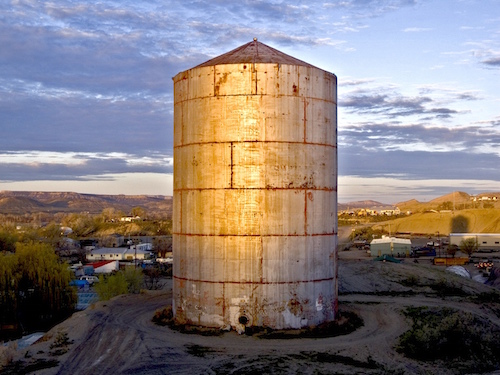Chijikinkutsu
 Monday, January 23, 2017 at 10:28 tagged
Monday, January 23, 2017 at 10:28 tagged  glass,
glass,  installations,
installations,  magnetic,
magnetic,  nature,
nature,  physical
physical Since ancient times, Japanese people have been sensitive to perceive nature as it is, from the sound of the wind through pine trees or the singing of insects in each season. ‘Chijikinkutsu’ was developed with this kind of delicate sense. - Nelo Akamatsu

Nelo Akamatsu is a Japanese multidisciplinary artist. “Chijikinkutsu”, the title of his latest work, is a contraction of the words “Chijiki” and “Suikinkutsu”. The first meaning “geomagnetism” and the latter is the word for a sound installation ornament for traditional Japanese gardens, invented in the 16th century.

In “Chijikinkutsu”, sewing needles are floating on water in glass tumblers which are magnetized, so they are affected by geomagnetism and turn like a compass. When electricity is applied to the coil which is on the outside of the glass tumbler, it creates a temporary magnetic field drawing the needle to the coil. The needle hits the glass creating a very delicate sound.
“A round surface of water in the glass with a floating magnetized needle, reminds me somewhat of a tiny earth with geomagnetism. The smaller the sounds of the glasses will be, the more keenly viewers’ sensibility will be sharpened. In the meantime, they realize that the sounds don’t come from outside of their bodies, but already exist inside of their mind.” - Nelo Akamatsu
I love the minimalist approach of only using a few elements and letting the complexity emerge from having multiple instances. Also, where most sound art is often very “visual” in simply showing the elements that the installation experience exists of (the speakers, the wire, the sensors), this work does not show the regular elements but maybe an even more stripped version of it. A speaker is also a coil being pushed and pulled, it also works with electromagnetism. In that sense, Akamatsu’s work is a very, very rudimentary work of sound art.



















